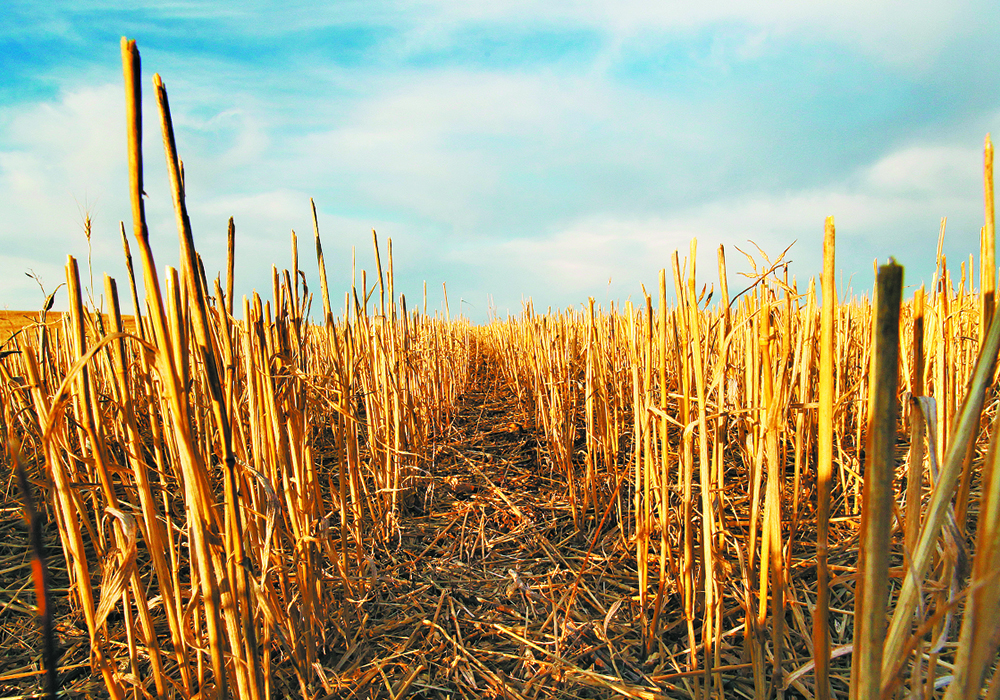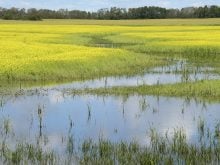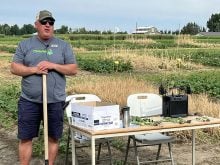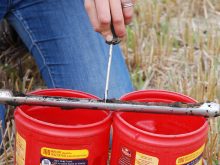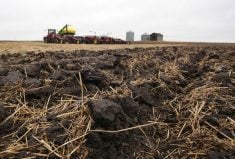Glacier FarmMedia – If this was a police procedural, DNA taken from the scene of a crime would help lock away the bad guy.
Here, the scene is a field, the farmer is the hero and the bad guy might be a hidden crop disease that the farmer can arrest because DNA samples warned him it was there.
Trace Genomics is an Iowa agronomy company that bases its services on DNA soil mapping. It has a distribution network across Canada and its flagship product, TraceComplete, integrates biology, chemistry and carbon data to generate over 10 million data points across every field to which it is applied.
“So many advances in computational biology, machine learning and even soil sciences have come a long way in our understanding of some of the areas we know about soil DNA today,” said company chief executive officer and co-founder Poornima Parameswaran.
Algorithms for computational biology have advanced to the point that soil microbes can be identified and scientists can understand what they do.
“This is really important, especially in terms of placing the right biologicals on the right fields and the right acres, knowing what soil function is, how your soil supports crop health stress, the phosphorus cycle, the nitrogen cycle.”
The goal is to provide detailed soil health insights to the farmer, along with recommendations on disease prediction, seeding, seed treatments, crop protection, crop nutrition and “nature-positive biologicals,” she added.
“It’s very similar to a blood test, where you get a readout for your red blood cells and it tells you ‘this’ is the normal range and you’re high, medium or low.”
Taurus Agricultural Marketing, based in Calgary, is among the U.S. firm’s distributors. It has offered TraceComplete and other Trace products to Canadian customers since last fall.
It’s “game changing” technology, said Taurus president Craig Davidson, noting tremendous interest from growers, retailers and agronomists across Canada.
Part of the reason could be recent reductions in crop prices. Lower income expectations might encourage farmers to seek precision solutions to protect profit margins, he added.
“This is actually a good time for an innovative solution like DNA sequencing to come along to help us better understand what we have to work with in our soil and make better decisions.”
The process begins by extracting DNA from multiple soil samples taken from the same field. That DNA is converted into a format that can be read by a sequencer. The resulting data points are mapped against a reference set of organisms and functions in the soil, creating indicators that producers can use to make decisions.
“We run one (test) to determine who’s there in the soil and another one to determine what the functions are in the soil,” Parameswaran said.
To make it work on the Prairies, characteristics of the region must be considered in the analysis. The company has databases throughout the United States and Canada to provide this data, and Parameswaran says it is working to add more countries to the network.
“We contextualize this data and tell our customers if they are high, medium or low for each indicator, based on other crops that are grown in other fields in their region,” she said.
“So, when a farmer or their agronomist sees the data, they can map it to their own risk, how they (prefer to) manage risk, and determine whether they need to take any action based on the high, medium or low value.”
Customers receive reports digitally through either the company’s TraceView web portal or software intermediaries that allow compatibility between applications. The latter is handy for customers who want to integrate the new data with their own farm management software systems, said Parameswaran.
“TraceView allows our customers to engage and play around with their data, whether they want an eagle’s eye view across their entire operation or they want to double click on fields and really dive into their high, medium and low production zones within event-specific fields.”
Awareness of DNA sequencing in soil is gaining traction, Parameswaran noted, but most producers are unaware of how the technology can be applied to precision agriculture.
“I think we really need to spread the word that this technology and these insights are available today. It’s not just the future, the future is here now.”
For Taurus, the choice to distribute Trace Genomics products related to synergies between the products’ promise and the Canadian company’s values, Davidson said.
“Our direct passion is around agronomy and fertility,” he said. “We’ve spent 23 years really trying to find innovative solutions that have a bit of a sustainable feel that actually help growers be better at what they do.”

From a financial and sustainability angle, the deal seemed to make sense. It’s also in “a little bit different league” than other technology out there, Davidson said.
“It can impact decisions, from rotation to variety selection to fungicidal seed treatments to crop disease management to nutrient cycling or nitrogen management to rhizobium concentrations to phosphorus management. It’s all-encompassing.”
Cost of the service depends on the user’s goals.
“You’re probably looking at a few hundred dollars per sample to get that information. But there could be a multitude of things that you decide to change in your operation and every one of those decisions could be worth thousands and thousands of dollars per field if you get it right or get it wrong.”
Davidson used the example of aphanomyces root rot.
“If every grower in Western Canada knew where they had aphanomyces, would they ever grow peas on those fields that have a background level of aphanomyces? They wouldn’t because the risk is so great that if you get infection, it wipes out the crop.”
For a few hundred dollars, that knowledge is worth it, he said.
It’s doubtful that DNA sequencing will quickly replace current, chemistry-based methods for soil testing, Davidson noted, although a few more years of progress may tell a different story.
“It’s new. Trace has been around for a few years and they’ve spent their time developing and commercializing this technology in the U.S., which we’re thankful for. But that doesn’t mean it’ll just happen overnight.”
“We need people that want to make a difference, want to have an impact for the better. Disruption never happens in hours or days or weeks. Disruption usually happens in years.”


